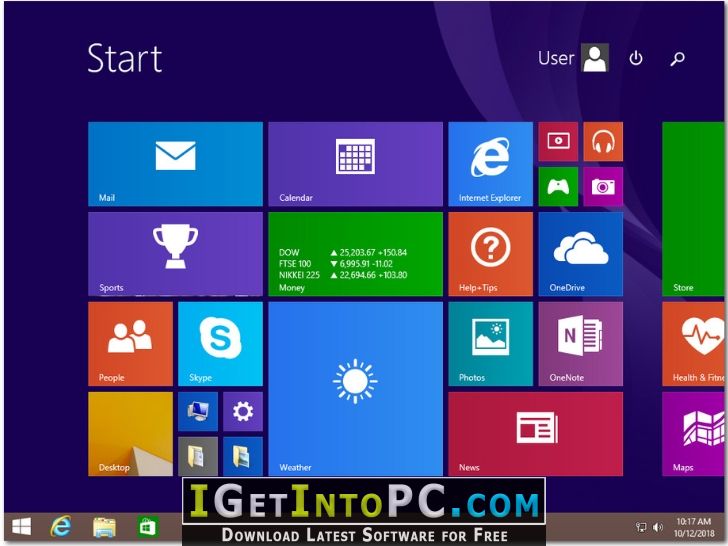Windows 81 Gpt Iso Download
Posted : admin On 18.12.2020Windows 8.1 Beta Builds (NOT FROM BETAARCHIVE FTP) An icon used to represent a menu that can be toggled by interacting with this icon. Download Windows 8.1 Disc Image (ISO File) If you need to install or reinstall Windows 8.1, you can use the tools on this page to create your own installation media using either a USB flash drive or a DVD. Download Windows 10 ISO Image. Download the official tool for downloading latest Windows 10 ISO files from here and launch it. Click on the 'Create installation media for another PC' option. Reboot the system and install Windows as usual. Confirm that Windows is installed to a GPT partition. Boot into Windows; Open Disk Manager (For Windows 10, press the Windows key and the X key simultaneously, then click Disk Manager) You see three partitions including the EFI System Partition.

Windows 81 Gpt Iso Download Win 7
Click on below button to start Windows 8.1 All in One ISO Free Download. This is complete offline installer and standalone setup for Windows 8.1 All in One ISO. You don't need to activate if because it is already activated, just for your easyness. This would be compatible with both 32 bit and 64 bit windows. Download GPT fdisk for free. GPT fdisk is a disk partitioning tool loosely modeled on Linux fdisk, but used for modifying GUID Partition Table (GPT) disks. The related FixParts utility fixes some common problems on Master Boot Record (MBR) disks. Download Windows 8.1 Pro Latest ISO File 64 bit and 32 bit. This ISO is the latest version of Windows 8 which is Windows 8.1 and include Windows Pro and Home both in the ISO. To download Windows 8.1 pro ISO just visit the link below and the downloading procedure also shown with screenshot below. Download Link 1 for WIndows 8.1 (Direct).
GPT or MBR? Boot to UEFI Mode or legacy BIOS mode?
As for Windows 10, it’s better to use GPT disk and boot to UEFI mode for flexible partition managing and more security features
To be more precisely:
- The GPT disk has no partition limitations, you can create as many partitions as you want, but on MBR disk, you can only have 4 primary partitions, the fifth partition, if you’d like to create, has to be created on an extended partition, and has to be a logical drive, which force us to convert one primary partition to logical, and in Disk Management, we can’t make the conversion without losing original data
- The maximum supported capacity on MBR disk is 2TB, which means if the disk you’re using is 4TB, only the first 2TB can be used. BUT the GPT disk has no such limitation
- UEFI mode provides faster boot and shutdown speed with additional security advantages
In order to make sure Windows 10 successfully install and boot to UEFI mode, we need to make sure the following conditions are True:
- The Disk is GPT style (use diskpart command to confirm)
- UEFI USB bootable ISO file (use Rufus to create)
- Boot mode set to UEFI (set this in BIOS)
Check if the disk is GPT
Insert the Windows 10 installation media and reboot, press Shift+F10 to open the command prompt tool after the install screen shows
Then type the following commands to check:
/download-halftime-vst-crack.html. If the listed disk has an Asterisk under the “GPT” column, it means the disk is currently GPT style, that’s what we want.
You can do this step after we created the UEFI USB boot ISO file in Rufus if you don’t have the Windows 10 install media right now
Note: the clean command will remove everything from the disk
Create UEFI USB bootable ISO file
Download Windows 10 ISO file from the official site on another computer, download Rufus, run it and in the main interface choose “GPT partition scheme for UEFI” from the ‘Partition scheme and target system type’ drop-down list, then select the ISO file and click “Start” to burn
Change BIOS setting
Plug in the USB device and boot from it, make sure the boot mode switched to UEFI
When PC reboots, there’s a prompt saying press the corresponding key (F2, F10, F11, F12 or check the different ways of access BIOS guide to enter BIOS), then on the boot device menu, select UEFI: USB Device instead of BIOS: Network/LAN
If the device you’re using only support one mode, then activate the UEFI mode requires the security features be disabled, we can manually operate this by navigating to the Security tab and disable it in the Secure Boot option
Then Save the changes and reboot, now we can have a clean install of Windows 10 on a GPT disk and boot to UEFI mode
Tip:
Microsoft suggests us to remove the bootmgr file if we want to boot only when in UEFI mode from the root of Windows PE or Windows Setup media
Windows 81 Gpt Iso Download 32-bit
Related Topic: